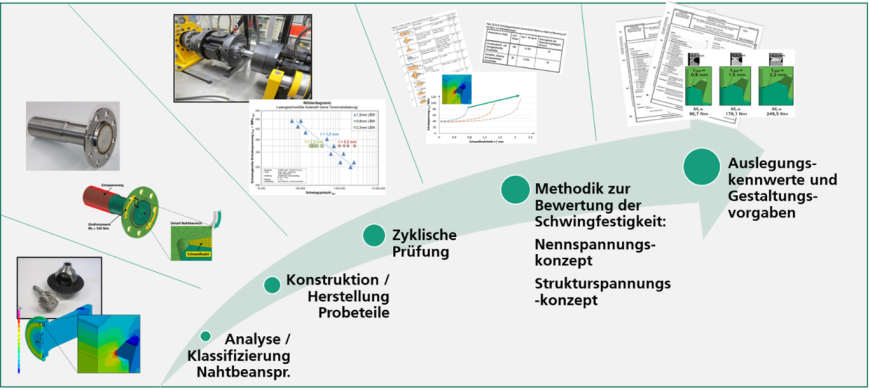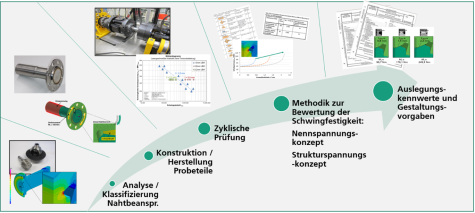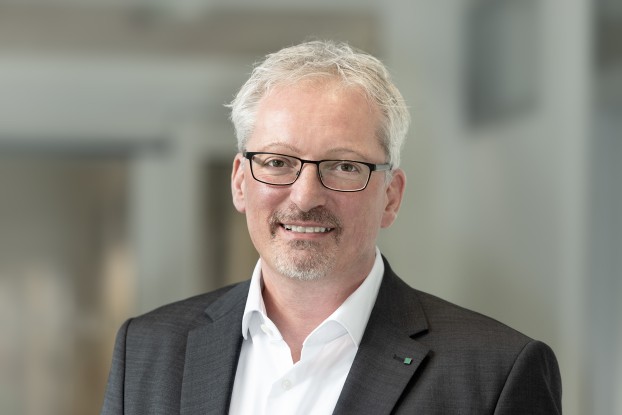The project IGF project no.: 22699 BG; Duration: 2 years is funded by the AiF Research Association: Welding and Related Processes e.V. of the DVS.
Participating institutes are the Fraunhofer Institute for Material and Beam Technology IWS and the Technical University of Darmstadt, System Reliability, Adaptronics and Machine Acoustics (SAM).
Motivation
The availability of experimentally validated design methods and design specifications for cyclically torsionally stressed laser welded joints are of high economic importance. As a result of the ever-improving process and material technology mastery of welding technology, laser-beam welded components are increasingly being used in cyclically highly stressed constructions where fatigue cracks are unacceptable.
In order to be able to design such components reliably, a reliable design concept is required. For industrial applications, special emphasis is placed on a concept that is as easy to use as possible. These criteria are usually fulfilled by the application-oriented design concepts of nominal and structural stress concepts. The definition of a nominal or structural voltage proves to be difficult in the case of the laser-welded shaft-hub connections under consideration. For the fatigue-resistant design of laser-welded drive components, there is no simple and reliable design method for industrial practice.
Objective
The aim of the project is to identify the limits of the applicability of the nominal and structural stress concept to laser beam-welded shaft-hub connections according to the current recommendations of established regulations and to expand them in the next step.
A further goal is the determination of geometry- and process-dependent design characteristics for shear-stressed laser weld seams with a practice-relevant seam depth of 1.5 mm – 5 mm, taking into account the seam configuration (radial / axial), the process configuration (with / without filler material) and the influence of weld seam depths and defects typical of practice.
Solution
In order to achieve the project objectives, fatigue strength tests will be carried out on specimens for the different seam configurations and the results, together with those for collected literature data, will be compared with the computational lifetimes according to the two stress concepts.
In the first step, building on the test specimen geometries (axial / radial: t = 3 mm) developed in the previous project, the geometric (t = 1.5 mm / 3.0 mm / 5.0 mm) and process configurations (with / without filler metal) are adapted, designed for testing by means of FE simulations and designed for production. This is followed by the mechanical production of test specimens and welding implementation by means of laser beam welding. In the next step, the cyclic testing of the specimens is carried out under pure torsion. The fatigue strength is then evaluated using the nominal and structural stress concept, with the aim of improving these concepts in terms of applicability to laser beam welded rotationally symmetrical components. The evaluation of the results ultimately leads to the derivation of generally applicable design parameters such as FAT classes and design specifications.
Kontakt
M.Sc. Markus Faß
Tel: +49 6151 705-454
Email: markus.fass@sam.tu-darmstadt.de




